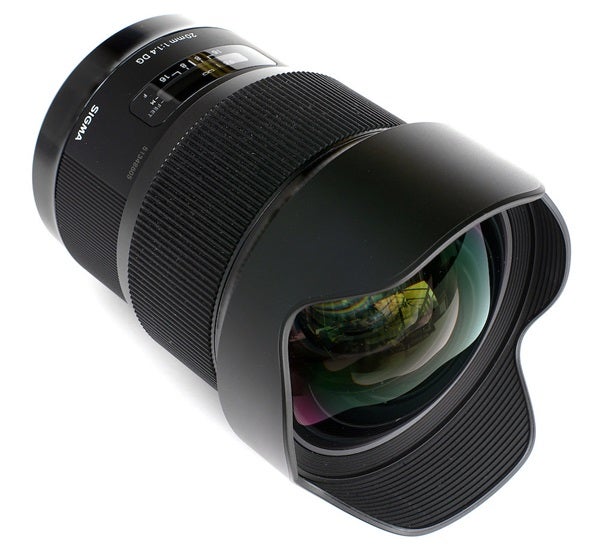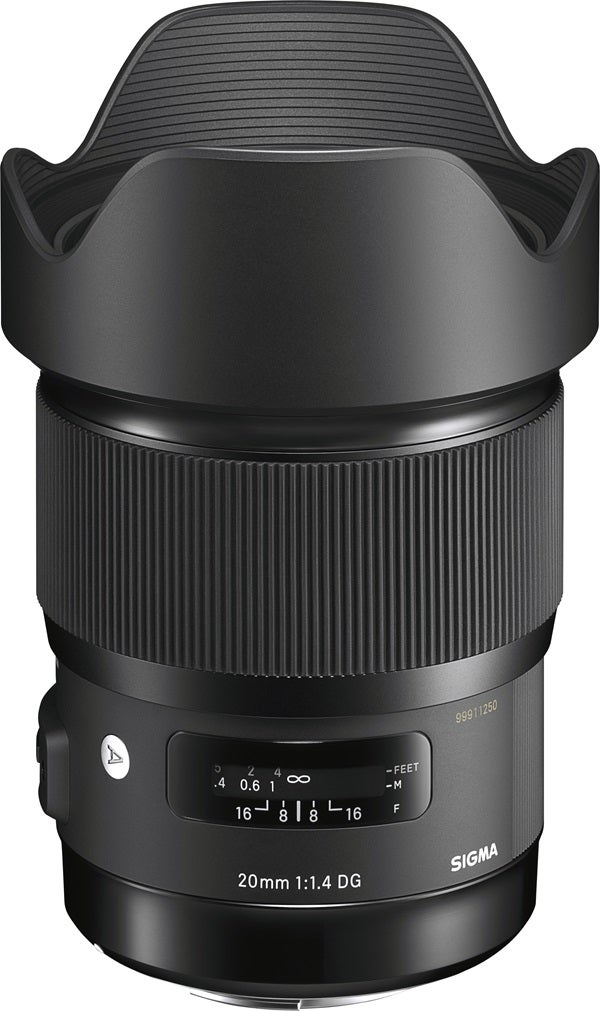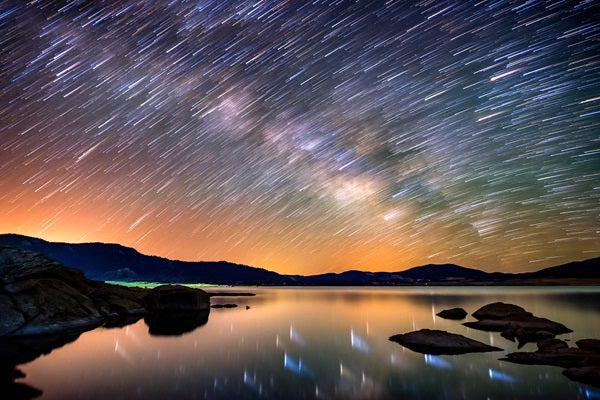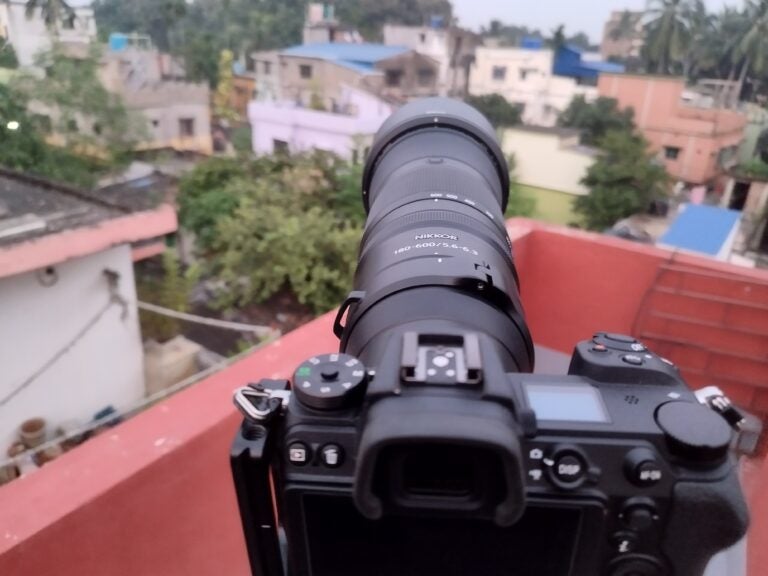This lens’ maximum aperture comes at a focal ratio of f/1.4, so it’s extremely fast and lets in lots of light. This fast ratio is perfect for capturing objects in the dark night sky.
Other specs include autofocus utilizing an ultrasonic motor, nine rounded aperture blades, lens mounts for various camera manufacturers, and super multicoatings to reduce lens flare and ghosting. The lens also has a built-in hood with a lens cap and a carrying case. But it’s not light: This lens weighs a hefty 33.5 ounces (950 grams).
Short focal lengths make shooting nightscapes and Milky Way panoramas easy. They also minimize the need for a tracking mount. I have previously shot nightscapes with 14mm f/2.8 and 35mm f/1.4 lenses attached to my Canon 60Da and Canon 5D cameras, respectively. The 20mm lens, falling in between the focal lengths of those other two lenses, offers a slightly different perspective.
I used both of my cameras to evaluate the Sigma lens. My Canon 5D, which uses a full-frame sensor, achieved a field of view of nearly 83.5° and a resolution of 85″ per pixel. The Canon 60Da, with its APS-C-size sensor, had a field of view of 58° and a resolution of 44″ per pixel. With a 1.6x crop factor, the field of view through the 20mm lens was similar to using a 32mm lens on the 5D.
The 20mm feels well built. It is definitely heavier than other short-focal-length lenses I’ve used, but in my hand the camera and lens didn’t feel out of balance or unwieldy. The manual focus ring is buttery smooth. I prefer one that is a tad stiffer, but it worked exceptionally well. The lens came to focus very close to the infinity mark on the lens distance scale.
The 20mm Sigma Art lens has all the hallmarks of well-built optics. It excels when it comes to sharpness, even with a wide-open aperture. As you’d expect, stars in the extreme corners are not well corrected when the lens is wide open at f/1.4, and they exhibit significant coma. Near the center of the lens, however, it’s a different story. The 20mm Sigma is a bit sharper than anything I’ve used.
It’s normal practice when using a camera lens for astroimaging to stop it down to get well-corrected stars in the corners of the image. The 20mm Sigma offers superb correction at f/4 and is easily usable at f/3.2. At f/2.8, the corner stars start to show elongation, and at f/1.4 coma is evident.
Focusing using the “Live View” capability of the 60Da was extremely easy because the stars snapped into focus. The lens does exhibit some chromatic aberration. Stars have bright magenta rings on one side of focus and slightly green ones on the other side. This actually made finding exact focus relatively easy because it was the point where the magenta disappeared.
One of the nice things about using a wide, short-focal-length lens is that you can gather excellent images just by mounting your camera on a tripod. No tracking required! However, you do need to keep your exposures relatively short to avoid elongated stars if your goal is a sharp image (showing the stars as your eyes see them).
Even after following these exposure recommendations, the stars showed some elongation when viewed full size, but it went away and the image looked sharp when downsized. These days, with low-noise CMOS chips and electronics with extremely high ISO settings, you may be able to get away with exposures using 400 divided by the focal length.
One issue I dealt with late at night was dew forming on the lens. The front of this lens is a big chunk of glass, and when it cooled to near the dew point, I constantly had to use a 12-volt hair dryer to carefully heat it up a bit. If you’re going to shoot in a humid climate, you may want to invest in a small dew heater strap to wrap around the lens cover. (I’ve got several, but forgot to bring them.) Either way, a quick shot of heat kept the lens clear for 10 minutes, long enough to take some short untracked exposures.
A bit later the same night, I decided to take my favorite shot: a mosaic of the Milky Way arching across the sky. The 20mm Sigma did not disappoint. With hair dryer in hand, I used the 5D camera and captured multiple 30-second untracked exposures at f/3.2 and ISO 1600. With my geared head and an 85° field of view, I took six images from south to north. Then I pointed the camera high and took six more in the opposite direction. Finally, I took six low across the ground. Six images gave me about a 20 percent overlap. I stitched together the 18 images in Adobe Photoshop using the “Photomerge” function.
The 20mm Sigma f/1.4 DG HSM Art is a well-built and well-corrected lens. The one I tested provided the best-looking stars at f/4, but f/3.2 won’t disappoint if you need the extra speed. This heavy lens is built to be solid. If you’re currently shooting nightscapes through 14mm or 35mm lenses, the 20mm focal length is one to add to your arsenal. And if you’re just starting wide-field imaging, I recommend you take a close look at Sigma’s 20mm lens.













